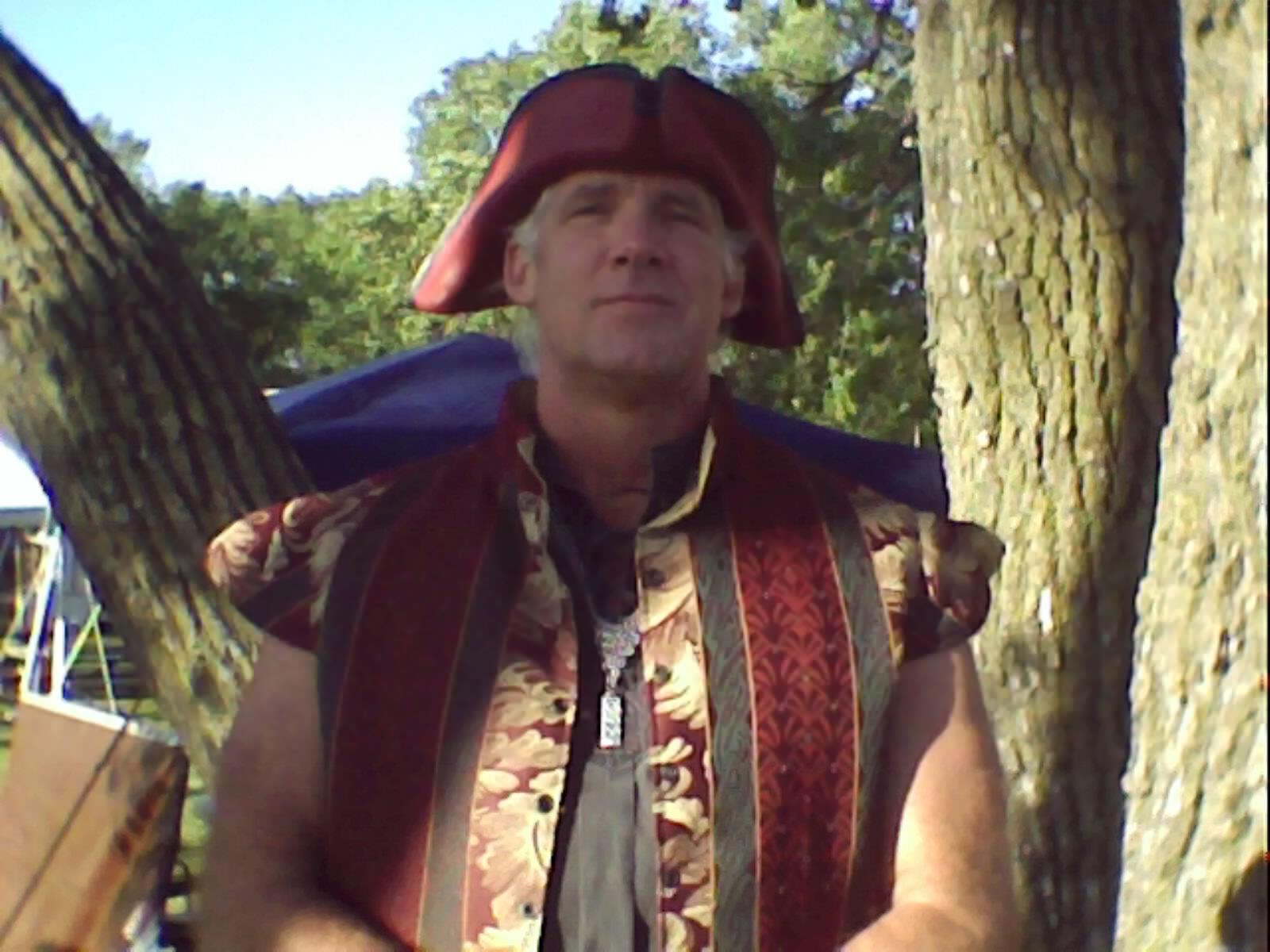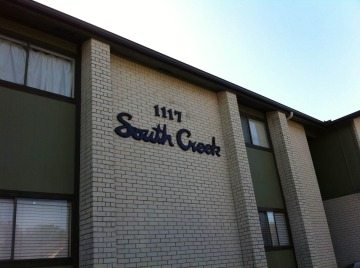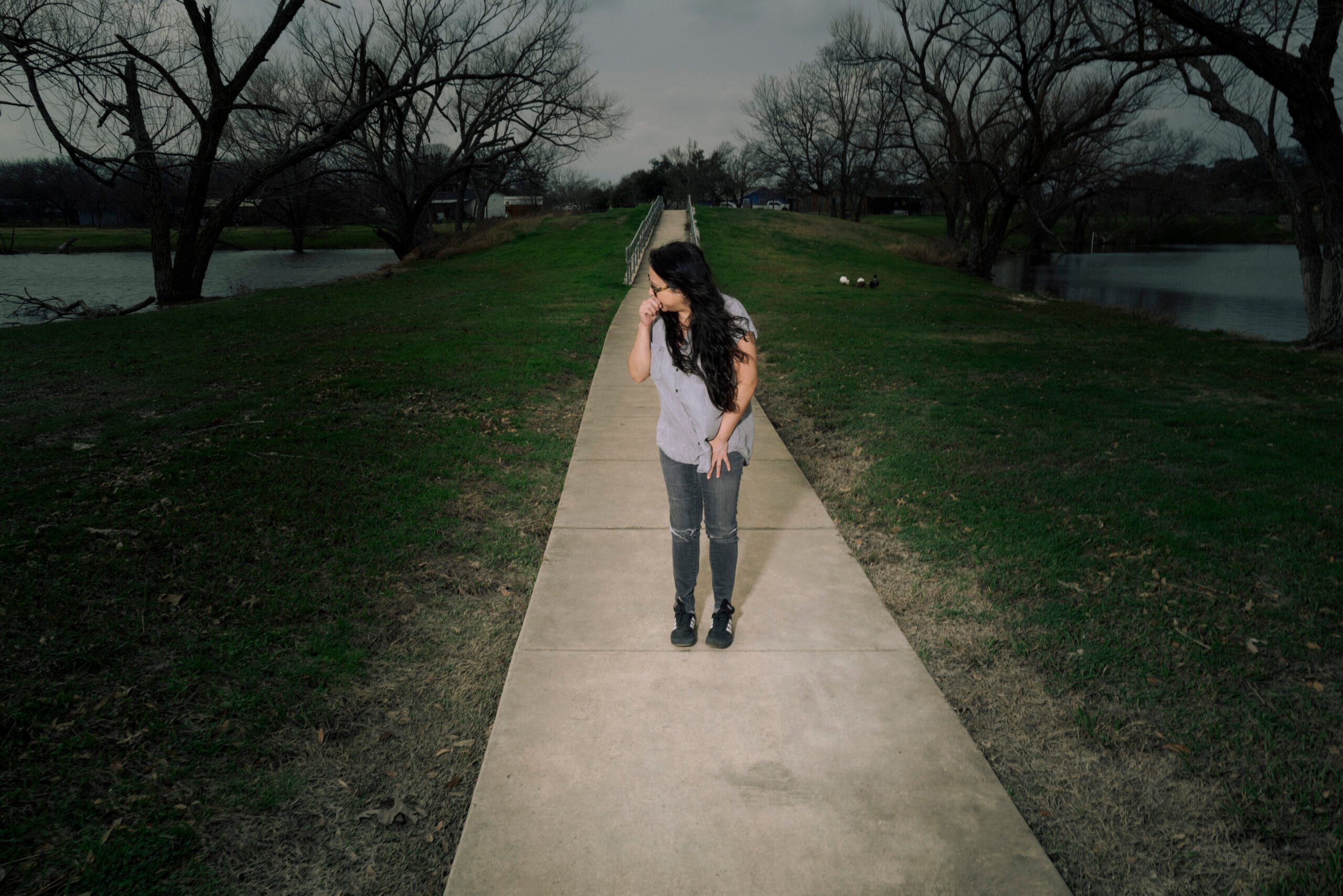
My Dogsitter, the ATX Shooter
Above: Larry Steve McQuilliams
Most people know Larry Steven McQuilliams from his Thanksgiving night shooting spree in downtown Austin. Around 2:30 a.m. on Oct. 28, he fired more than 100 rounds at the Mexican consulate, the federal courthouse and the Austin Police Department headquarters before police shot and killed him.
Two hours later I awoke to someone pounding on the door of my apartment at 1117 Hollow Creek. The policeman at my door said there had been an officer-involved shooting and everyone had to leave the building while police checked the deceased suspect’s apartment for explosives. A police helicopter thrummed overhead. The officer wouldn’t give us details, but said we’d learn all about it on the news. I went with my neighbor to his mother’s house nearby, where we flipped through news channels and listened to an online feed of Travis County law enforcement scanners, trying to figure out who the shooter was. We knew almost everyone at South Creek, our 23-unit apartment complex.
The next day, I went back to my apartment building to try to retrieve my car key, but was still not permitted to enter my room. I also got on Twitter and started sharing what I knew with the press. As a freelance writer I knew information from citizen-journalists could be valuable. While I didn’t know the shooter well, he was my neighbor and occasional dogsitter, and I was also more comfortable speaking with the media than most of the neighbors who knew him better.
I’ve had three weeks to reflect on the ATX shooter, to talk with my neighbors who best knew Steve (the name he went by with us). We’ve wrestled with the fact that the man we knew scarcely resembled the figure who shot up downtown and who was described by police and the media as a terrorist and extremist. We thought the Steve we knew was the full Steve, the real Steve.
The weekend before last I sat for several hours with six other South Creek residents and ex-residents in our courtyard, drinking and talking about him. Those who had known Steve as a friend were at once disbelieving, dazed, frustrated and sad. The rest of us tried to make sense of the actions of a fixture of our community.
Linda knew Steve best. (I’ve used pseudonyms for all the neighbors because they didn’t want their real names mentioned.) I asked her what he disliked about the government.
“He didn’t like Obamacare,” Linda said. “And he didn’t agree with the thing about the amnesty.”
She revealed Steve hadn’t trusted banks, either; he’d converted his savings to silver bars and coins.
“He said, ‘You should take all your money and get silver.’ I’m going, ‘Steve, I don’t know about that.’”
I asked why she thought he’d targeted the police department.
“He didn’t like the police because they were belligerent to people. Like when he was at the park [they’d] strut around. He didn’t like it when he’s at the park people are trying to have a nice time… [He wondered] why can’t the police just leave people alone.”
There is—was—only one person who could reconcile Steve’s action with the gentle person known to neighbors and friends, and he’s dead.
But my neighbors and I didn’t know Steve to be a hate-filled man, and therefore the terrorist narrative is unsatisfying.
“He wanted to do something so dramatic that they would kill him. He did [the shooting at the consulate] so they would think it was political,” speculated Linda.
“Steve wouldn’t hurt a fly,” said Meghan, Steve’s closest friend in the building other than Linda. “He went out there at 2:30 a.m.” because the streets would be empty.
Linda said Steve was intensely religious.
“He was very into the Bible and all the verses,” she said. “He knew [the Bible] through and through.” He hated Christmas, she said, “because Jesus didn’t celebrate Christmas.”
Linda also said she felt certain that Steve believed he wouldn’t get into heaven if he committed suicide by his own hand.
Speculation that Steve sought “death by cop” as a way to end his life and reach heaven offers one explanation for the shooting spree. It still doesn’t explain the circumstances that would have led Steve to want to die. But a multi-page suicide note Steve left outside Linda’s apartment taped to a bag of cat food does offer some insights.
Meghan was the only neighbor who saw the note. When she did—apparently late in the day while police were searching Steve’s apartment—she says she read it once, then alerted police, who removed it.
The night before, Linda and Steve had shared a slice of Thanksgiving pie, though Steve left early complaining of an upset stomach. Steve addressed the note to Linda. Meghan says he wrote about not fitting in from a young age, describing how he felt left out. He rambled. Then he apologized for leaving behind his beloved cats, bequeathing them and his remaining belongings to Linda.
Steve’s parents came last week to clean out his apartment, and are apparently legal heirs to his belongings. When reached for comment on the note, an APD spokesperson said the case was still open and that they would not be releasing any more details than what were included at the press conference shortly after the shooting. I’ve filed a public information request with APD to confirm the existence of the suicide note.
Other quirks about Steve emerged from speaking with those who knew him. I learned that Steve was a prepper, which may help explain the propane tanks found in his apartment. And I learned that he had been a follower of pseudoscientist Zecharia Sitchin, famous for his “ancient astronaut” theory that Mesopotamian art depicted 9-foot-tall aliens that had helped humans find their footing. Linda said Steve even had a map of “archaeological evidence of how the celestial beings came down who taught the people how to build the pyramids.”
But I think Steve’s criminal record and resulting employment difficulties—not his “extremist” viewpoints—were what kept him from living the tranquil life that had drawn him back to Austin.
He was arrested in 1992 following an armed robbery of an armored car. He was sent to federal prison and released in 2000.
One of the first times I saw Steve around the building we spoke about where he’d come from. He said he’d worked at a water treatment plant near Wichita, Kansas. When he’d suggested fixing a problem above his pay grade, he told me, he’d been scolded for speaking out of turn. Frustrated with the bureaucratic bullshit, Steve quit. Other neighbors heard a different story— that a family member had cost him a job where he was making $17 an hour.
Those who had known Steve as a friend were at once disbelieving, dazed, frustrated and sad. The rest of us tried to make sense of the actions of a fixture of our community.
“I can give them outstanding references,” he recounted to me more than once.
“They all just do a background check first and throw my application away. I checked with my references. Not one call.”
He wasn’t satisfied with the car wash. He mentioned feeling left out as one of the only non-Latinos there, and applied to restaurants seeking dishwasher gigs. Once he offered me a card for a company. He wanted to teach women self-defense skills based on krav maga, the martial art used by the Israeli army.
When he moved to Austin, Linda recalled, “all he wanted to do [was] be stress-free…He wanted to just enjoy the park and float, and he said, ‘I’ll just get any shitty job.’ But then with his background checks, he couldn’t get anything.” Other neighbors admitted to wondering what Steve was living on and how long it could have lasted.
His chronic frustration with unemployment seemed to have turned to resignation this summer and fall. I saw him smash his bike, then his only mode of transport. He gave away or sold many of his possessions; I recovered his soccer ball from the curb by the dumpster. And he sold camping equipment to Linda.
A few memories of Steve stand out to me. The first is of him nuzzling his cat, Lily, the night before Thanksgiving. The second is of him racing around the apartment complex at 4 a.m. a week earlier. The water heater had started malfunctioning with a sound like gunfire,

bringing a half dozen of us out of our apartments, but none of us had moved to investigate until Steve emerged from his apartment. Barefoot and clad in shorts, he dashed downstairs, circled the shed, and shook its door to test the lock. I remember thinking it was nice to know that someone fearless like Steve was around.
We’d often cross paths in the summer when I was walking my dog Radar and Steve was coming from the spillway at Barton Springs, where he liked to be around the free spirits at what’s affectionately known as Barking Springs. Balancing his blow-up chair on his head, flippers in hand, he’d sometimes report on the water conditions, or tell me whether he’d gone to work that day at the carwash.
Almost every morning Radar raided the cat food dish Steve left outside his door, and Steve watched Radar when I was away this summer. Whenever we ran into six-foot-plus Steve he’d usually stoop down to pat Radar, a Chihuahua mix, on the head.
That was the Steve I grew to know during our superficial acquaintance. He was kind. Protective. Perhaps a bit childlike.
Steve has been portrayed as a monster by authorities. That’s understandable given his actions and the evidence recovered by the police.
Initially, in the aftermath of the shooting, I wanted to show people the “real Steve.” I was quoted in an interview on KVUE saying Steve had been “the sweetest gentle giant” and “a kooky guy.”
I researched the detrimental effects of background checks on employment prospects—a legitimate problem—and concluded that Steve was a victim of an unfair system, someone who’d been unfairly portrayed as an extremist in part to justify a police state. That’s how I felt at the time. I still do, to an extent.
But as I gained emotional and temporal distance from the shooting, I came to accept that there is—was—only one person who could reconcile Steve’s action with the gentle person known to neighbors and friends, and he’s dead. Neither my speculation nor Chief Acevedo’s sound bites are satisfying explanations.
I can only offer this personal observation, that Chief Acevedo’s admonition to “know your neighbors” rang true to me, though in a way that I suspect is different from his intended meaning. My neighbors in the South Creek complex epitomized community. We knew Steve, and yet he was still a stranger.


